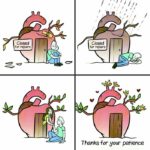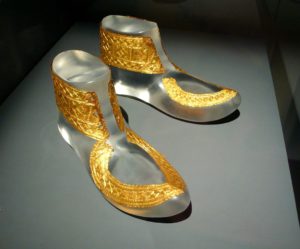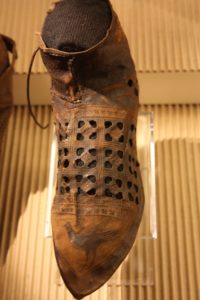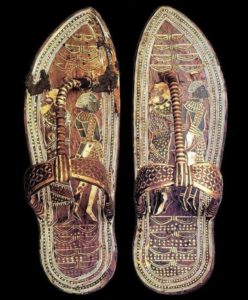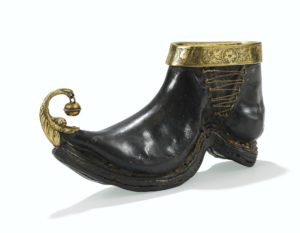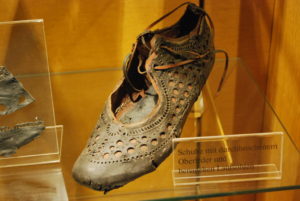Marcus Tullius Cicero writing 2000 years ago on our hollowed-out foundations in the age of Trump.
- Laws are silent in time of war.
- The enemy is within the gates; it is with our own luxury, our own folly, our own criminality that we have to contend.
- Orators are most vehement when their cause is weak.
- When you have no basis for an argument, abuse the plaintiff.
- Nothing is more unreliable than the populace, nothing more obscure than human intentions, nothing more deceptive than the whole electoral system.
- It might be pardonable to refuse to defend some men, but to defend them negligently is nothing short of criminal.
- The false is nothing but an imitation of the true.
- The sinews of war are infinite money.
- It is the peculiar quality of a fool to perceive the faults of others and to forget his own.
- The higher we are placed, the more humbly we should walk.
- A liar is not believed even though he tells the truth.
Accuracy is the ability to hit a target,

Precision is the ability to achieve the same results over and over.
You can be accurate without being precise, and precise without being accurate.
“In every field of inquiry, it is true that all things should be made as simple as possible – but no simpler. (And for every problem that is muddled by over-complexity, a dozen are muddled by over-simplifying.)” –Sydney J. Harris
I have filled many “pages” (Okay, too many) describing the problems that go with reductionism when it isn’t used as an experimental approach, but as a pseudo-philosophy of life appropriate for non-scientists. Most people don’t have a perpetual burr under their saddle about this sort of thing: Understandably. It’s sort of the philosophical version of being irked by someone consistently misusing a word and spreading that misunderstanding to others.
Surprisingly, the best argument against the cement mattress of reductionism might not involve me complaining at all, but simply sharing the details of some complex systems and letting the observer grasp the mind-blowing nettle for themselves.
These are very well done walkthroughs of our molecular machinery; skip around if you like, there will not be a quiz later. I challenge you to watch even a little of this without being shocked into a new open-mindedness concerning the genius underlying life. *
“These animations show cellular biology on the molecular scale. The structure of chromatin, the processes of transcription, translation, DNA replication, and cell division are shown. All animations are scientifically accurate and derived from molecular biology and crystallography research. I have composed this video from multiple animations under fair use for non-profit, educational purposes. I do not claim copyright on this video or its contents, with the exception of the cell image. Most credit goes to Drew Berry and the Walter and Eliza Hall Institute of Medical Research (WEHI TV) for the animations. Full credits are at the end of the video.” James Tyrwhitt-Drake
DNA animations by wehi.tv for science-art exhibition
-* Usual disclaimer: No religious ax being ground. Not a creationist.
These are brilliantly pure and warm. Some of these came very close to home for me, hopefully you will find something valuable too! Here’s her Instagram: https://www.instagram.com/guadascribbles/?hl=en
This is one hellacious science fact; it’s absolutely Metal. A question about the evolutionary point of menstruation leads to revealing the surprising life and death struggle between Mother and Fetus. It turns out their interests overlap only to a point. Beyond that point, it’s all cold-blooded competition; a no holds barred cage match. Suddenly, a third player appears.
https://www.quora.com/What-is-the-evolutionary-benefit-or-p…
Suzanne Sadedin, Ph.D. Evolutionary Biology
“…In many mammals, the placenta, which is part of the fetus, just interfaces with the surface of the mother’s blood vessels, allowing nutrients to cross to the little darling. Marsupials don’t even let their fetuses get to the blood: they merely secrete a sort of milk through the uterine wall. However, other mammal groups, including the higher primates, have retained a more direct connection, termed a hemochorial placenta. Among humans, chimpanzees, and gorillas, its development is especially invasive.
Inside the uterus, we have a thick layer of endometrial tissue, which contains only tiny blood vessels. The endometrium seals off our main blood supply from the newly implanted embryo. The growing placenta literally burrows through this layer, rips into arterial walls and re-wires them to channel blood straight to the hungry embryo. It delves deep into the surrounding tissues, razes them and pumps the arteries full of hormones so they expand into the space created. It paralyzes these arteries so the mother cannot even constrict them.
What this means is that the growing fetus now has direct, unrestricted access to its mother’s blood supply. It can manufacture hormones and use them to manipulate her. It can, for instance, increase her blood sugar, dilate her arteries, and inflate her blood pressure to provide itself with more nutrients. And it does. Some fetal cells find their way through the placenta and into the mother’s bloodstream. They will grow in her blood and organs, and even in her brain, for the rest of her life, making her a genetic chimera.
This might seem rather disrespectful. In fact, it’s sibling rivalry at its evolutionary best. You see, mother and fetus have quite distinct evolutionary interests. The mother ‘wants’ to dedicate approximately equal resources to all her surviving children, including possible future children, and none to those who will die. The fetus ‘wants’ to survive, and take as much as it can get. (The quotes are to indicate that this isn’t about what they consciously want, but about what evolution tends to optimize.)
There’s also a third player here – the father, whose interests align still less with the mother’s because her other offspring may not be his. Through a process called genomic imprinting, certain fetal genes inherited from the father can activate in the placenta. These genes ruthlessly promote the welfare of the offspring at the mother’s expense.”
Celtic Gold shoe plaques from the Hochdorf Chieftain’s Grave, Germany, c. 530 BC

